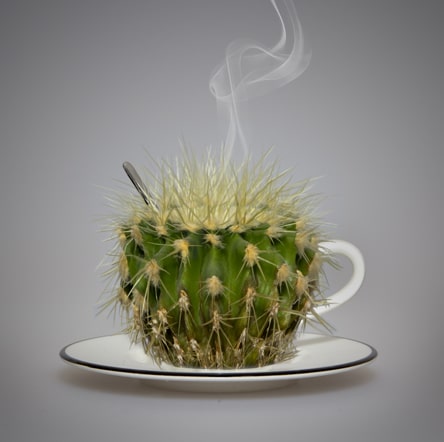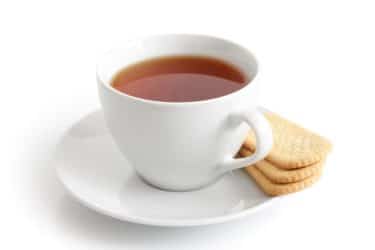Food Safety
Food Safety
In De Theefabriek’s wholesale tea business, we monitor food safety by implementing an HACCP plan, under the guidance of a Food Safety Consultant from Eurofins and in consultation with the Dutch Food and Consumer Product Safety Authority.
The essence of an HACCP (Hazard Analysis and Critical Control Points) system lies in identifying potential threats to the food safety of the food produced and identifying critical control points and/or general control measures in the production process by which these risks can be controlled.
Prior to an HACCP implementation, proper application of basic food safety principles such as hygiene, traceability and climate control is necessary.
HACCP implementation is based on the WHO and FAO Codex Alimentarius International Food Standards.
Food safety, of course, always starts with the producers of the ingredients traded or processed, mostly in countries outside Europe: tea, herbs, spices and fruits in our case. If the producer is certified organic (by reputable independent certification bodies such as Kiwa, Ceres, Ecocert, A Cert, Control Union and the like) then we can at least assume that no chemical-synthetic pesticides and fertilizers were used in the cultivation. Since over 95% of our trade consists of organically certified products, this already reduces the risk of food unsafe batches of ingredients quite a bit!
Trust is good, control is better … after all, you never know what may have happened during cultivation and harvest but also during processing (drying, cutting etc.), storage and transportation.
For example, leaching from a higher, non-organic growing area may have occurred, but air pollution and other external factors may also have played a role. Other plants may have been accidentally co-harvested that may contain undesirable substances such as Pyrrolizidine Alkaloids, as well as sticks, stones and other physical contamination may have joined the product. Additional physical contamination may occur during processing: packaging material. metal particles, hair and the like, as well as chemical contamination such as Polycyclic Aromatic Hydrocarbons related to drying and smoking, oil from machinery and the like. Storage areas and containers may be fumigated, residue may enter food. Damp and/or unsanitary conditions can cause microbiological contamination, such as mold and bacterial infections.
We like to leave the chemical and microbiological food safety control of 99% of our trade to the European importers/processors from whom we source our ingredients as much as possible. Currently (February 2024) we have 12 regular importers we do business with. That includes importers we have been sourcing ingredients from for over 30 years and only one importer we have been sourcing tea from for less than 5 years. All of these importers are organically certified to import, trade and/or process the organic ingredients we source from them, keeping the organic chain closed. In addition, 7 hold highly reputable food safety certifications: 4 IFS Food and 3 FSSC 22000. Two importers have simpler certification: one ISO 9001 : 2015 and one BRCGS – Global Standard for Food Safety Issue 9: August 2022 Grade: A+. Three importers are not additionally certified.

Because importers are primarily responsible for the food safety of products placed on the European market, laboratory analyses are performed by them, based on their own risk analysis, on relevant parameters, such as pesticide residues, microbiology and other potential food safety threats. We can request the results of those analyses or see them directly when purchasing new batches of ingredients. And we do so regularly, to assure ourselves of the food safety of what we buy.
Checking for physical contamination of the products we do ourselves. This type of contamination, in the form of metal particles, pieces of plastic, wood, paper, insects and the like, is of course highly undesirable but usually does not pose a public health risk, given the intended use of the product, namely brewing teas and infusions. Because almost everything that passes through our hands is “read,” because of the manual, small-scale method of processing and packaging, we catch most problems early. In addition, we have a bar magnet that allows us to test products for metal contamination. Live physical contamination, such as insects, maggots, etc., is virtually eliminated by the importers’ high-pressure CO2 treatment of our deliveries.
Occasionally we import some conventional teas and herbs ourselves. For example, the special “Flowering Teas” and Butterfly Pea blossoms from China. Without exception, these products are analyzed at our order in origin by recognized European research institutes such as SGS or Eurofins. Only when the analysis results show that the products are EU-compliant food safe do we bring them to the Netherlands.
In addition to the food safety of the food itself, you also have the suitability of the packaging materials for packaging that food. For example, no unwanted chemicals from the packaging material should get into the food. This is investigated, for example, by performing migration tests on the materials used. Products/importers of the packaging materials prepare Declarations of Conformity based on these analyses, which substantiate that the materials are actually suitable for packaging (certain types of) food.

We cannot resist and have some concluding remarks.
We understand that after reading the above, you may not dare to drink a cup of tea nor sell a bag of herbs. It’s a bit like going to the notary or getting insurance. The most major dramas are considered to avoid being left with long hands when an emergency occurs. Food safety is important and has threats in many forms. It is good to be acutely aware of this and, where necessary and possible, remove the threats by, for example, a good and sensible procurement policy and building in controls.
We would like to emphasize that importers are at great risk when importing potentially unsafe ingredients. If a spot check by the NVWA (or one of its fellow authorities) upon entry into Europe judges a batch of ingredients to be non-compliant with EU legislation, the importer is in big trouble. The batch can then no longer be placed on the market, and returning it is often not possible or very costly. In this sense, there is a great self-cleansing effect. And with those spot checks, you can’t take a “guess” either, because only 1 in 100 containers are picked out, for example. We have an importer where, for example, 100% of the tea containers from China are tested by NVWA (at the importer’s expense). As an importer, you want to be pretty much sure that the ingredients meet European food safety requirements before you actually import it. Importers who make a mess of things, they just don’t make it.
As a final observation. We are noticing in the Netherlands that the NVWA seems to be moving closer and closer to the consumer, to the retailers, to demand substantiation of the food safety of the products sold, at least in the tea world in which we operate. The practical result is that retail suppliers, wholesalers (including us), are inundated with requests for analytical results, product specifications, certificates and substantiation of food safety policies. Now we don’t know very well how this is done in other sectors, but we can hardly imagine the fruit and vegetable retailer having to ask for product specifications and analysis results at wholesalers or auctions. Or the butcher, baker, deli and nut store at their direct suppliers. Perhaps it would be better in the tea, herbs and spices world to create a kind of white-list of importers and wholesalers, concentrate control activities on that, and exempt retailers who purchase from this white-list from inquiring about food safety. Then the scarce available inspectors can be used more efficiently and retailers can concentrate on what they do best and enjoy doing: selling beautiful, natural teas, herbs and spices to enthusiastic consumers!



